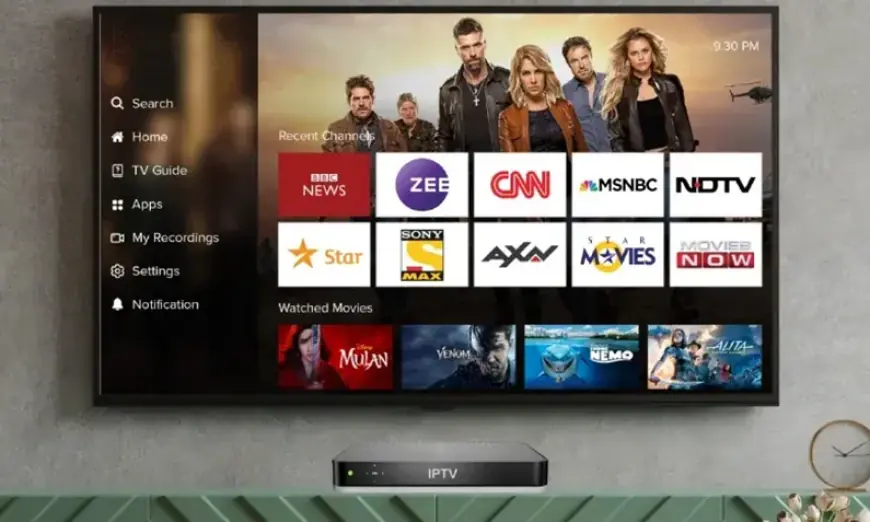Understanding IPTV and OTT: Revolutionizing Media Consumption
IPTV is a service that streams live TV channels, on-demand videos, and recorded content using private networks managed by telecom providers. It ensures stable connections and is ideal for users prioritizing reliability and quality. OTT services, on the other hand, deliver content over the open internet, allowing users to watch movies, series, and live streams on multiple devices without needing traditional cable or satellite services. OTT platforms are more flexible and affordable but depend on the user’s internet speed for quality. As technology advances, IPTV and OTT are merging features, providing audiences with an ever-evolving landscape of media consumption options.

The way we consume television and video content has undergone a dramatic transformation over the last decade. Two key technologies at the forefront of this revolution are **IPTV (Internet Protocol Television)** and **OTT (Over-the-Top)** services. While both rely on the internet for delivering content, they cater to different needs and operate on distinct infrastructures.
What is IPTV?
IPTV stands for Internet Protocol Television, a technology that delivers television programming through internet protocol (IP) networks instead of traditional terrestrial, satellite, or cable formats. IPTV allows users to access live TV channels, on-demand videos, and time-shifted content.
Key characteristics of IPTV include:
1. Infrastructure: Operates within closed networks, often managed by telecom or cable providers.
2. Controlled Environment: Ensures a high-quality, consistent viewing experience by managing bandwidth and delivery.
3. Subscription-Based: Typically requires a subscription through a service provider.
4. Compatibility: Can be accessed via set-top boxes, smart TVs, or apps on mobile devices.
Examples of IPTV services include AT&T U-verse, BT TV, and many regional telecom-provided platforms.
What is OTT?
OTT (Over-the-Top) refers to media services that are delivered directly over the internet, bypassing traditional distribution channels. These platforms do not require a subscription to a cable or satellite provider but rely solely on an internet connection.
Key features of OTT include:
1. Flexibility: Accessible from multiple devices, including smartphones, tablets, smart TVs, and gaming consoles.
2. Content Variety: Offers a mix of original, on-demand, and live-streamed content.
3. Subscription and Ad Models: Includes subscription-based platforms (Netflix, Disney+), ad-supported services (YouTube, Pluto TV), and hybrid models.
4. Global Reach: OTT services are not limited to regional networks, making them accessible worldwide.
Popular OTT platforms include Netflix, Hulu, Amazon Prime Video, Disney+, and YouTube.
Advantages of IPTV and OTT
IPTV Advantages:
- High-quality streaming with minimal buffering.
- Integrated with traditional TV services for a seamless experience.
- Ideal for users with access to dedicated broadband connections.
OTT Advantages:
- Greater flexibility and mobility.
- More affordable and diverse pricing options.
- Easy access to global content and original programming.
Challenges and Considerations
While both technologies offer significant benefits, they come with challenges:
- For IPTV: Requires a stable and high-speed internet connection, and its dependency on telecom providers limits its accessibility to certain regions.
- For OTT: Quality of service depends on user bandwidth, and the growing number of platforms has fragmented the market, making it costly to subscribe to multiple services.
Future of IPTV and OTT
The line between IPTV and OTT continues to blur as technology evolves. Many IPTV premium providers are integrating OTT offerings into their platforms to remain competitive, while OTT platforms are experimenting with live TV and linear programming.
The global shift towards 5G and advancements in streaming technology will likely enhance the performance and accessibility of both IPTV and OTT, shaping the future of media consumption.
In conclusion, IPTV and OTT each play a pivotal role in the modern media ecosystem. IPTV caters to users seeking high-quality, reliable programming, while OTT offers flexibility and a vast content library. Together, they exemplify the boundless potential of internet-based media delivery.

 TracyJackson
TracyJackson 










